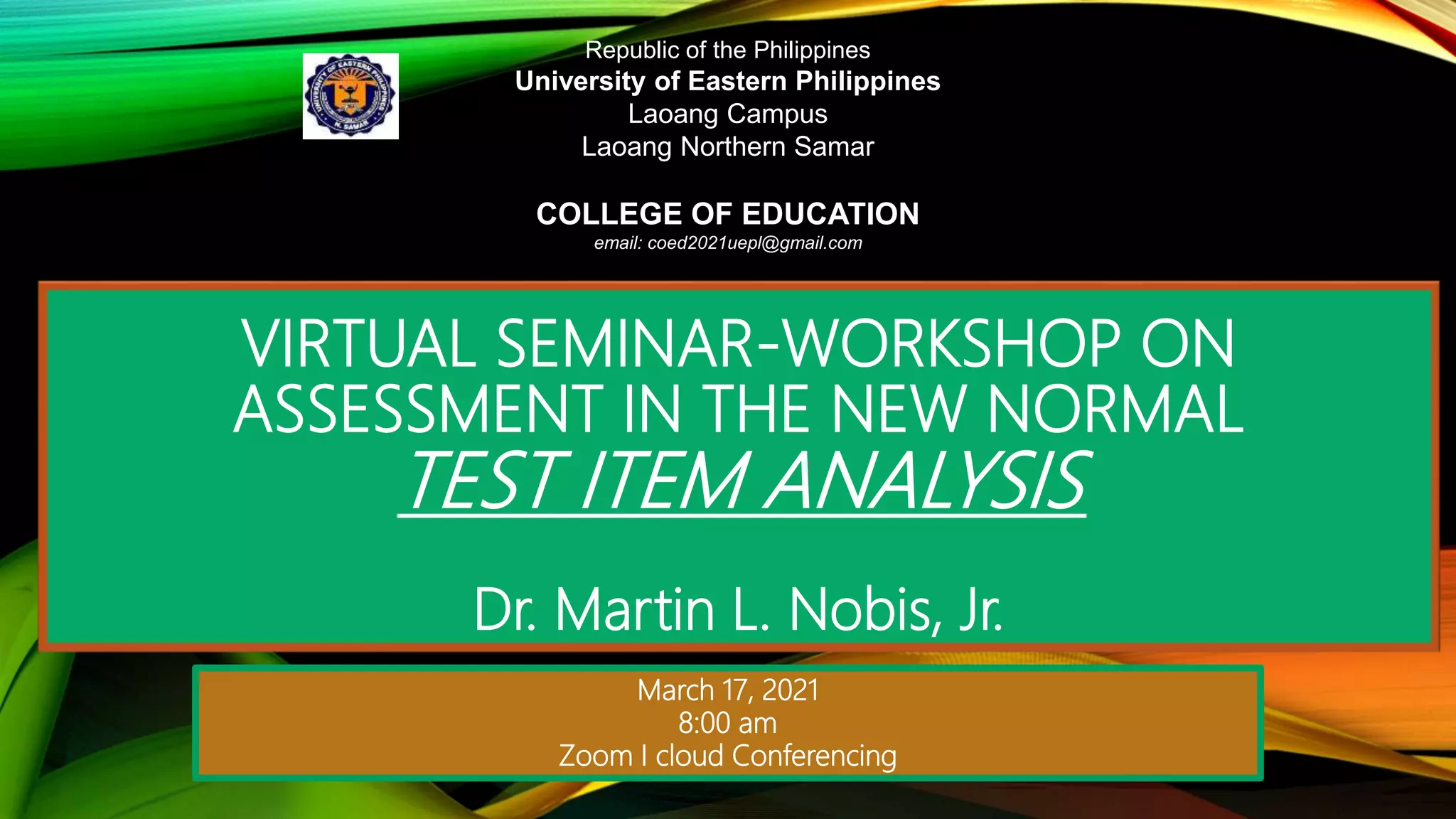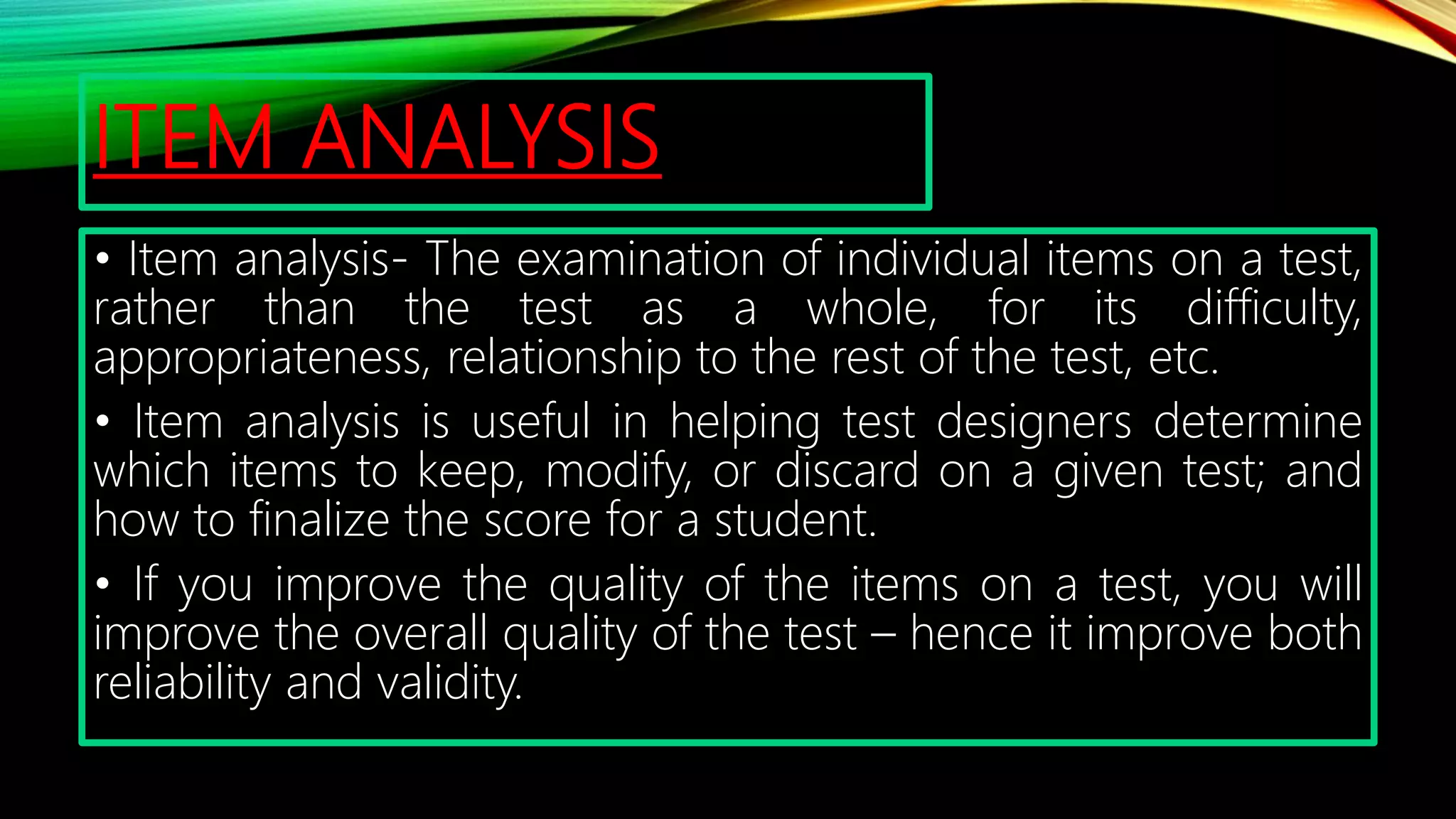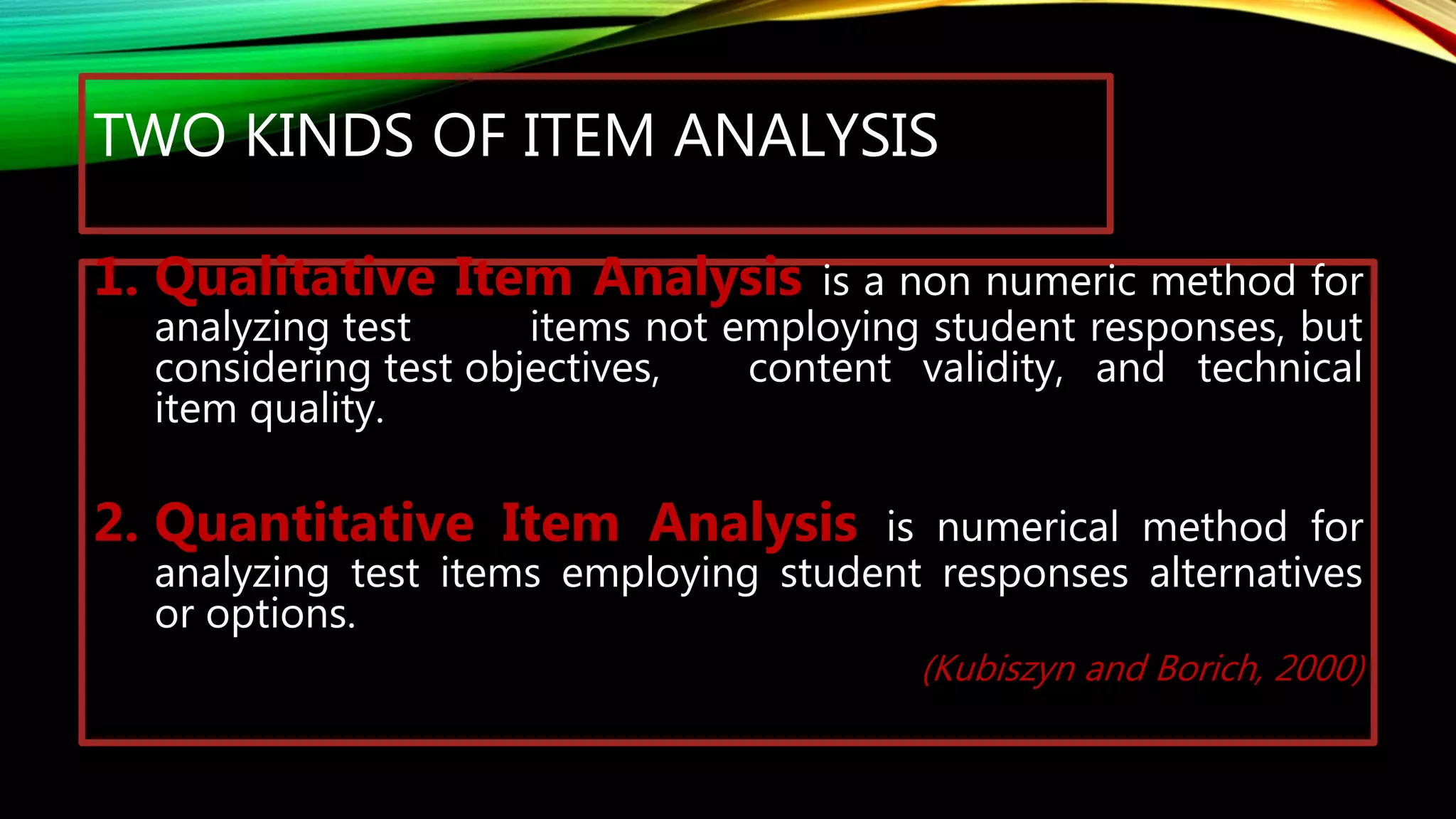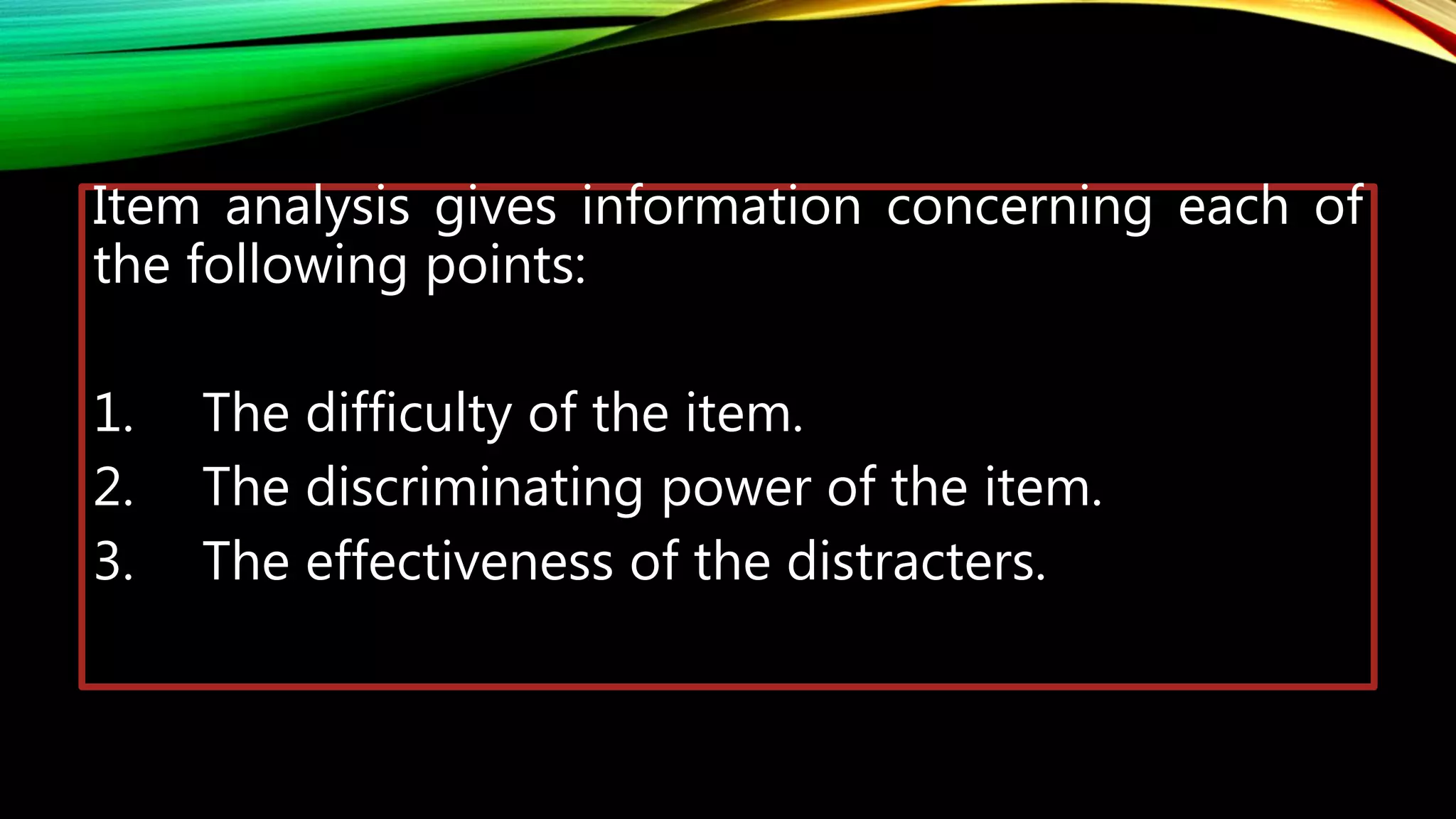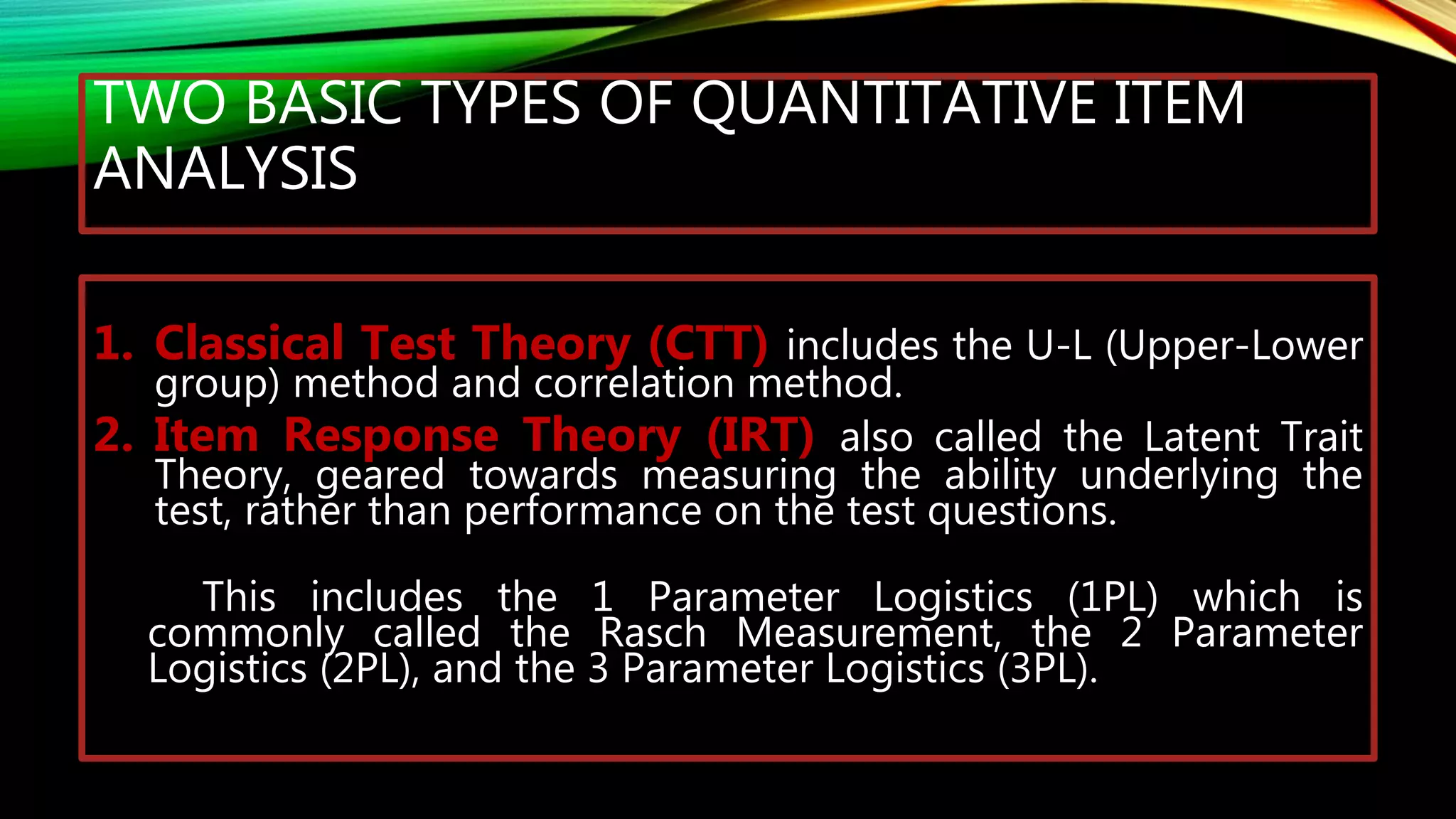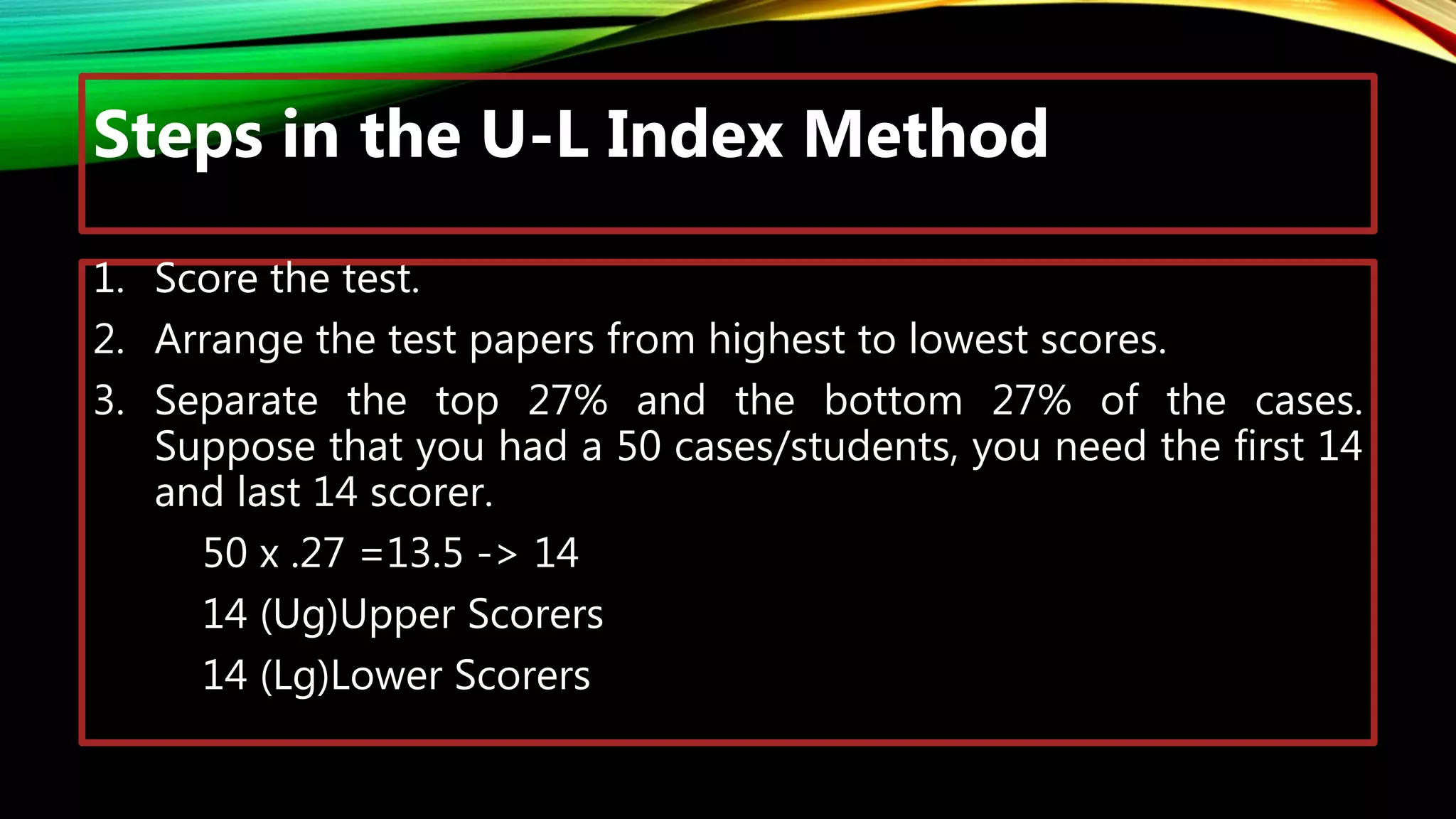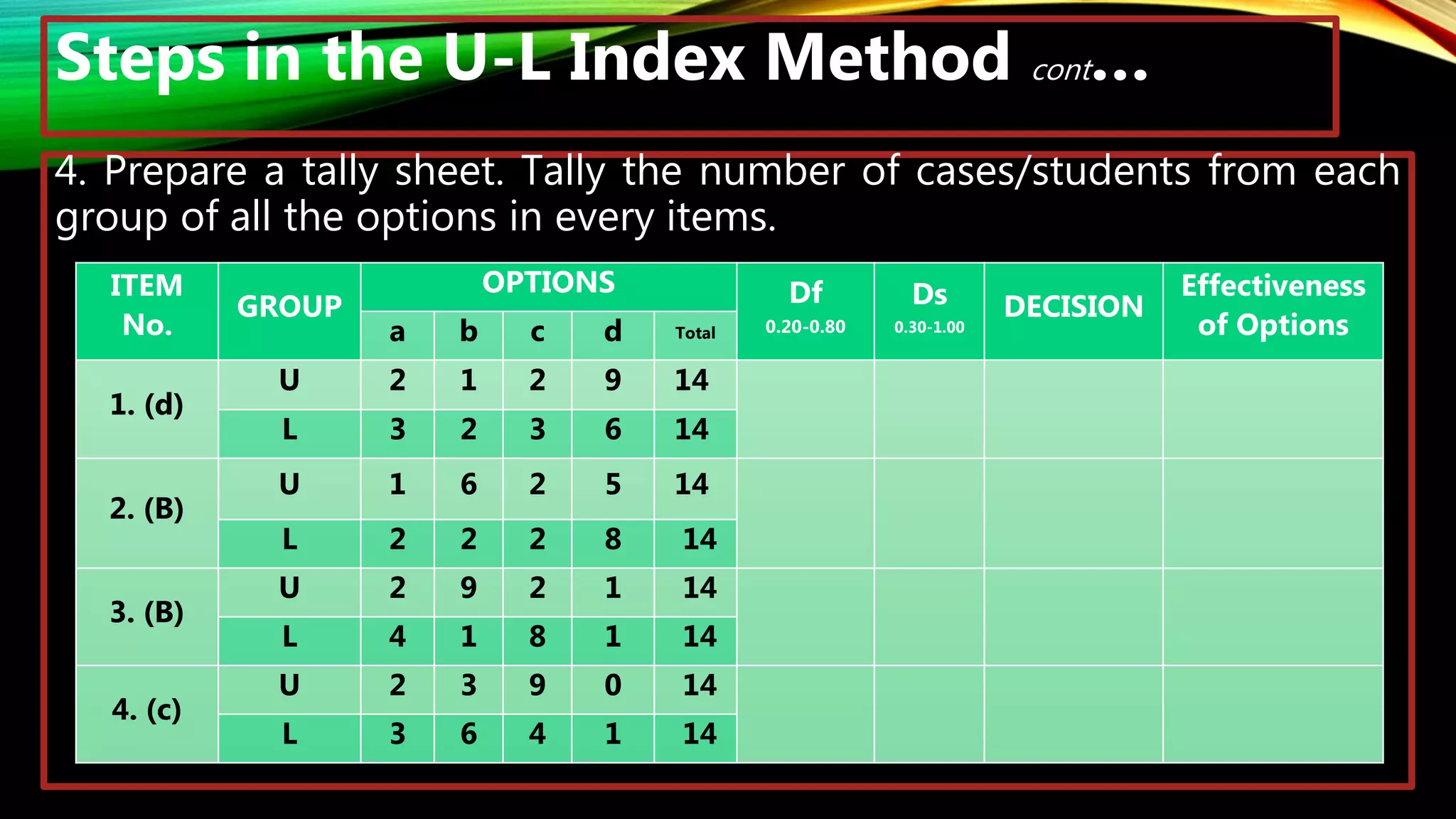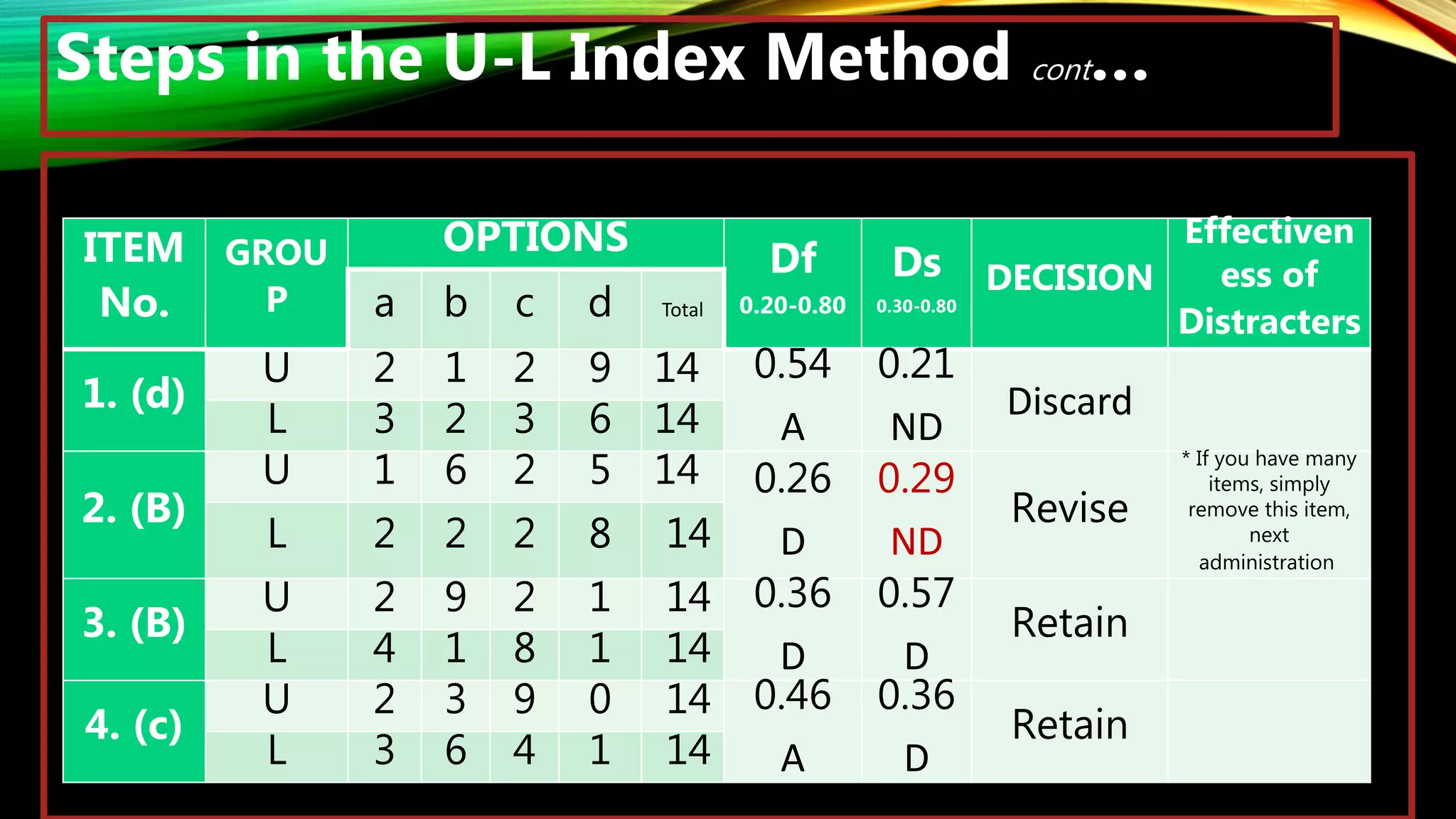This document summarizes information about conducting item analysis on tests. It discusses qualitative and quantitative item analysis methods. The classical test theory (CTT) and item response theory (IRT) quantitative methods are described. Steps for conducting a quantitative item analysis using the U-L (Upper-Lower) Index Method are provided in detail, including calculating item difficulty and discrimination indices and evaluating the effectiveness of distractors. Computer software options for item analysis are also listed.
